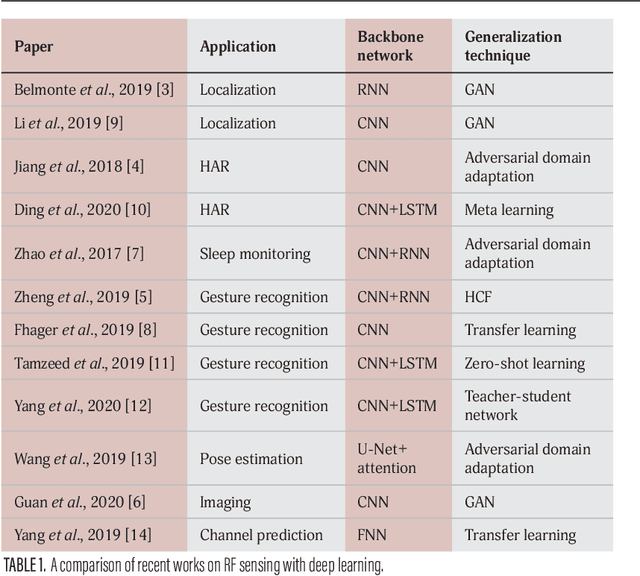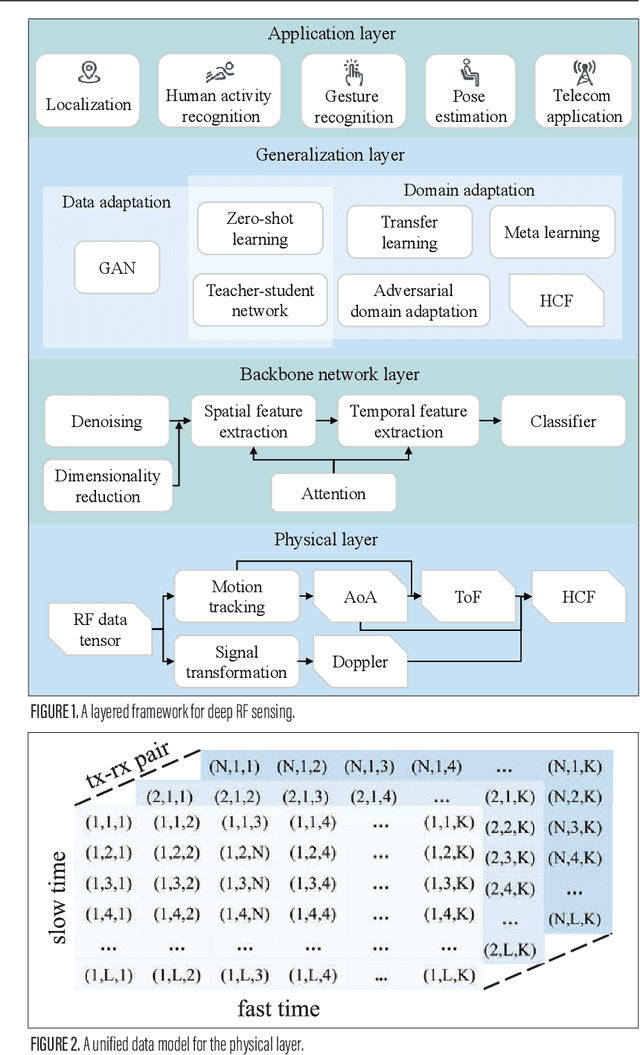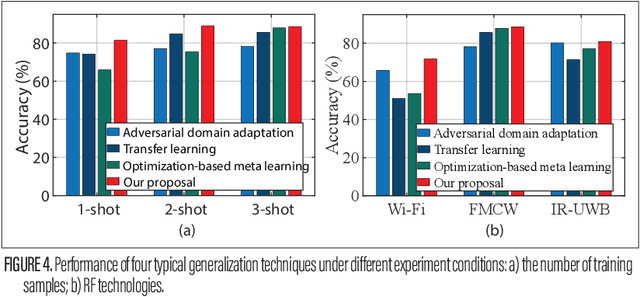Enhancing RF Sensing with Deep Learning: A Layered Approach
Paper and Code
Oct 28, 2021



In recent years, radio frequency (RF) sensing has gained increasing popularity due to its pervasiveness, low cost, non-intrusiveness, and privacy preservation. However, realizing the promises of RF sensing is highly nontrivial, given typical challenges such as multipath and interference. One potential solution leverages deep learning to build direct mappings from the RF domain to target domains, hence avoiding complex RF physical modeling. While earlier solutions exploit only simple feature extraction and classification modules, an emerging trend adds functional layers on top of elementary modules for more powerful generalizability and flexible applicability. To better understand this potential, this article takes a layered approach to summarize RF sensing enabled by deep learning. Essentially, we present a four-layer framework: physical, backbone, generalization, and application. While this layered framework provides readers a systematic methodology for designing deep interpreted RF sensing, it also facilitates making improvement proposals and hints at future research opportunities.
 Add to Chrome
Add to Chrome Add to Firefox
Add to Firefox Add to Edge
Add to Edge